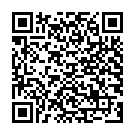|
|
|
| Module code: ABBW67 |
|
30VH (30 hours) |
|
10 |
| Semester: 2 |
| Mandatory course: yes |
Language of instruction:
German |
Assessment:
Online exam (minimum of 75% to pass)
[updated 19.12.2023]
|
|
The total student study time for this course is 300 hours.
|
Recommended prerequisites (modules):
None.
|
Recommended as prerequisite for:
|
Module coordinator:
Studienleitung |
Lecturer: Studienleitung
[updated 14.12.2021]
|
Learning outcomes:
General Aeronautics Section
After successfully completing this module, students will be familiar with the basic structure of the airframe and engine. They will be able to interpret the instruments correctly and fly the aircraft within its performance limits.
Students will study the general construction of an aircraft as well as all the parts and their functions. Theyll learn the operation of air-driven systems on piston engine aircrafts.
They will learn the differences and functions of anti-icing and de-icing systems.
Students will also learn the operation and control of turbine engines.
Also covered are the different flight instruments (IFR) and instruction on automatic flight control systems.
Principles of Flight II
Students will learn the basic principles of flight. They will come to understand aerodynamic behavior and low airspeeds, as well as basic flight mechanics, such as drift in turns.
[updated 19.12.2023]
|
Module content:
General Aeronautics Section
- Airframe (structure, components)
- Fuselage, wings, tail unit
- Mixed construction
- Elevator, lateral control and yaw control
- Trim system
Secondary control systems
- Landing gear (nose wheel, steering, tires, condition)
- Brake systems and special features during use
- Stress on the airframe and static strength
- Safety factors
- Rudder locking mechanism and its operation
- Ground and in-flight precautions
Fuselage
Cockpit and cabin window
Wing
Stabilizing surface
Landing gear
Flight controls
Hydraulics
Air-driven systems (piston engine aircraft)
Air-driven Systems (turbine engine aircraft)
Non-pneumatic-operated de-icing and anti-icing systems
Turbine engine
Turbine engine construction
Engine systems
Auxiliary power
Flight instruments
Automatic flight control systems
Principles of Flight II
Principles of flight
Low speed aerodynamics
Basic flight mechanics
[updated 19.12.2023]
|
Teaching methods/Media:
Laptops, presentation, text books
[updated 19.12.2023]
|
Recommended or required reading:
Training documents from the flight school
[updated 19.12.2023]
|

